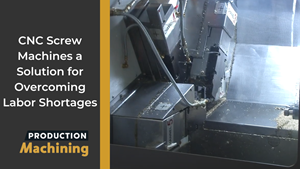Training the Next Generation: Process, Content and Flexible Training Considerations
If the number one challenge today facing our workforce is finding skilled talent, then what is number two?
If the number one challenge today facing our workforce is finding skilled talent, then what is number two? I believe that the number two challenge is: How do we train them? Other questions that come to mind: Are we developing people in house? Do we seek outside resources to do the training for us? Do we even have a plan? Maybe the bigger question when it comes to training is whom do we have to do the training? Here are three criteria to consider when developing a quality training program to deliver skills to our workforce.
The first consideration in a training program should be the instructional process. The process is important, as it is the means used to communicate the goal, the steps to achieve that goal and materials needed to inform and provide knowledge of the desired skill sets to be learned. One way to think of the instructional process is to look at it as a map. When deciding how to get to a location, we use a map. The map describes not only how to get there, but also provides context about our destination. The design of a training program should accomplish the same for its users. If we want our employees to obtain specific skill sets, then those skill sets must be identified, along with the body of knowledge needed to get them to be able to do those tasks.
The second consideration is content. Whether working with a new hire or current employee, a trainer uses both the work instructions and reference materials to help the employee understand the task and background needed to perform the task. This content makes it possible for the trainer to reaffirm the defined steps of the process and assess the employee’s ability based upon their performance of those identified steps. Instructional and reference materials should be easily understood, accessible and used as a point of reference when communicating throughout the entire training process. The materials will need to be kept current and modified as your team gains experience and offers continuous improvement ideas. Establishing a library of materials helps to standardize the training experience and assures uniformity of training provided to all performers. Eliminating variability between performers is a key to delivering world-class quality.
A third consideration is flexibility. There is no one-size-fits-all approach. Every performer is different in how they learn, how they understand and how they use new information. Since our learners are not one size fits all, why should our training options be limited? We need to be practical in implementing the program in our shop. We need to consider schedules, length of training sessions and the overall timeframe for the program to assure learner success and still meet the demands of our shop’s demanding production schedules. This needs to be carefully thought out to avoid learner burnout and loss of performers to production. To get this flexibility, we need to be open to options for work and training scheduling. We need to consider the platform and context where training takes place, as well as the time. After a full day of challenging and exacting work, will our learners be at their best for understanding new materials? Is online, classroom or a combination of the two the most effective means of providing our training materials? To become a best practice, our program needs an environment that is conducive to the desired training outcome for our learners.
Once we have located the talent that we need for our shops, it is up to us to provide the means to help them acquire the skills needed to add value and build their careers. Having a defined process, providing needed work instructions and reference material, and flexibility in delivering training are three important considerations as we embark on our training journey.
— Precision Machined Products Association
Related Content
Succession Planning: Three 15-Minute Activities to Start Preparing for Tomorrow
Succession planning is planning for the future success of your business.
Read MoreThe Value of Aligning Efforts to Promote Manufacturing Careers
Successfully building the next generation of manufacturers requires a team effort between employers, educators and parents. Each of these three groups has a tremendous impact on young people’s career decisions. Without the support of all three, we are unlikely to bridge the skilled labor shortage that threatens the future growth of our industry.
Read MoreEmerging Leader's Problem-Solving Skills Cool Down a Hot Project
This 2023 Emerging Leader developed a product in response to a call for help from Yamaha that was a huge hit in the snowmobile industry when it hit the market in 2010. In fact, it is now a common product that most snowmobile OEMs have implemented.
Read MoreVideo Tech Brief: CNC Screw Machines a Solution for Overcoming Labor Shortages
CNC screw machines can exceed job shop productivity and enable manufacturers to overcome perpetual employment gaps.
Read MoreRead Next
A Tooling Workshop Worth a Visit
Marubeni Citizen-Cincom’s tooling and accessory workshop offers a chance to learn more about ancillary devices that can boost machining efficiency and capability.
Read MoreSeeing Automated Workpiece Measurement in Real Time
User-friendly inspection software for CNC machining centers was shown at IMTS 2024 monitoring measurements between and after machining while performing SPC based on recorded measurement values.
Read MoreDo You Have Single Points of Failure?
Plans need to be in place before a catastrophic event occurs.
Read More





















